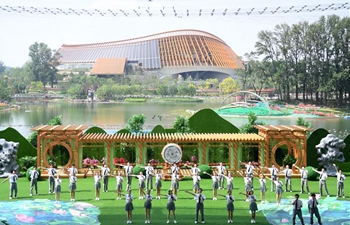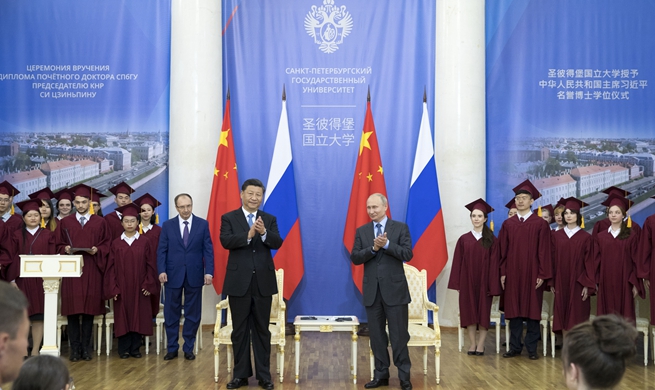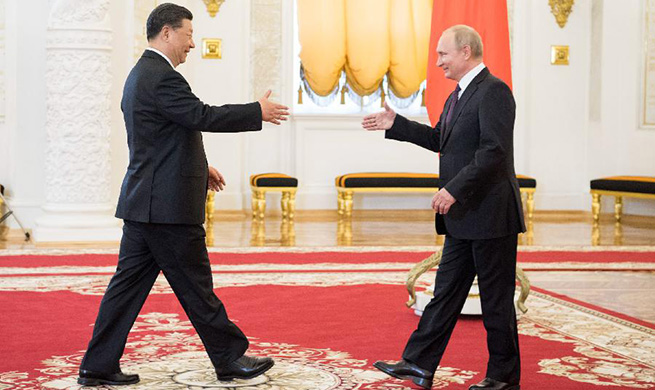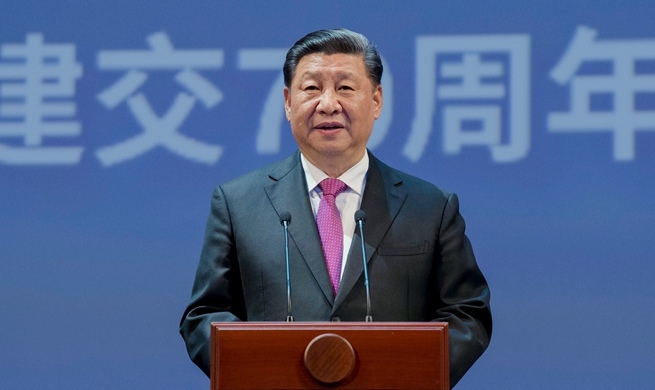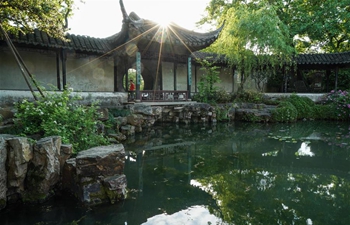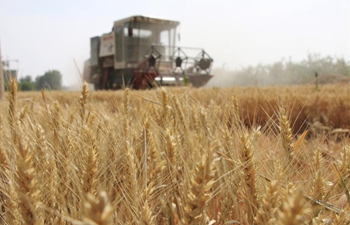BEIJING, June 7 (Xinhua) -- China's annual college entrance exam began Friday as an estimated 10 million students sat the critical exam needed to pursue their higher education.
The exam will last two days generally but due to different arrangements, in some provincial regions it may run until Sunday, the Ministry of Education said.
The number of students applying to take the exam this year is the highest since 2010, according to an annual report published by the Eol website, an education information service provider.
Nineteen-year-old Mu Shiqi is one of the exam takers.
"She said she would try her best to strive for a good university," her father Mu Weiqing told Xinhua. "She believes the exam can change her fate."
Mu Shiqi is a member of the ethnic Dulong group in Dulongjiang Township of Gongshan County, a remote mountainous corner of southwest China's Yunnan Province, about 3,500 kilometers away from Beijing.
She is following the step of three older cousins in her family who all went to college. This year 25 ethnic Dulong youth will take the college entrance exam.
The ethnic Dulong group, of about 7,000 people in all at present, was one of the least educated people when the People's Republic of China was founded 70 years ago. There was no primary school in Dulongjiang Township until 1952, let alone the prospect of higher education.
"Our traditions were mostly passed down from older generations orally," Mu Weiqing said.
Started in 1952, the national college entrance exam has provided young people like Mu Shiqi with a valuable opportunity to see a bigger world and realize their aspirations. Its evolution is a symbol of China's education development.
Between 1952 and 1965, one year before it was halted because of the Cultural Revolution (1966-1976), the exam was taken by a small number of people due to limited higher education resources. There were about 200 colleges in China in the early 1950s.
In 1977 when the exam was resumed, a record 5.7 million people took the exam, including high school graduates, farmers and factory workers, making it very competitive.
China's gross higher education enrollment rate was 1.4 percent in 1978 and soared to 48.1 percent in 2018.
According to the Ministry of Education, there were 38.33 million students of higher education in China in 2018, up from 6.42 million in 1998 and about 117,000 in 1949.
"China has built the largest-scale higher education system in the world," said Fan Hailin, deputy director of the higher education division of the ministry.
Booming higher education has been built upon the expanding foundation of basic education over the last 70 years.
In 1949, China's illiteracy rate stood at 80 percent and it reached 95 percent among people of many ethnic minority groups. The illiteracy rate among young people dropped to 1.08 percent in 2010.
In 2018, the net enrollment rate of primary schools nationwide reached 99.95 percent and that of high schools was 88.8 percent.
"China's education development has entered a new phase," said Xiong Bingqi, vice president of 21st Century Education Research Institute, a leading educational think-tank in China. "The country had spent great efforts and resources in expanding the scale of the education system to cover as many people as possible. Now we should focus on how to improve the quality."









